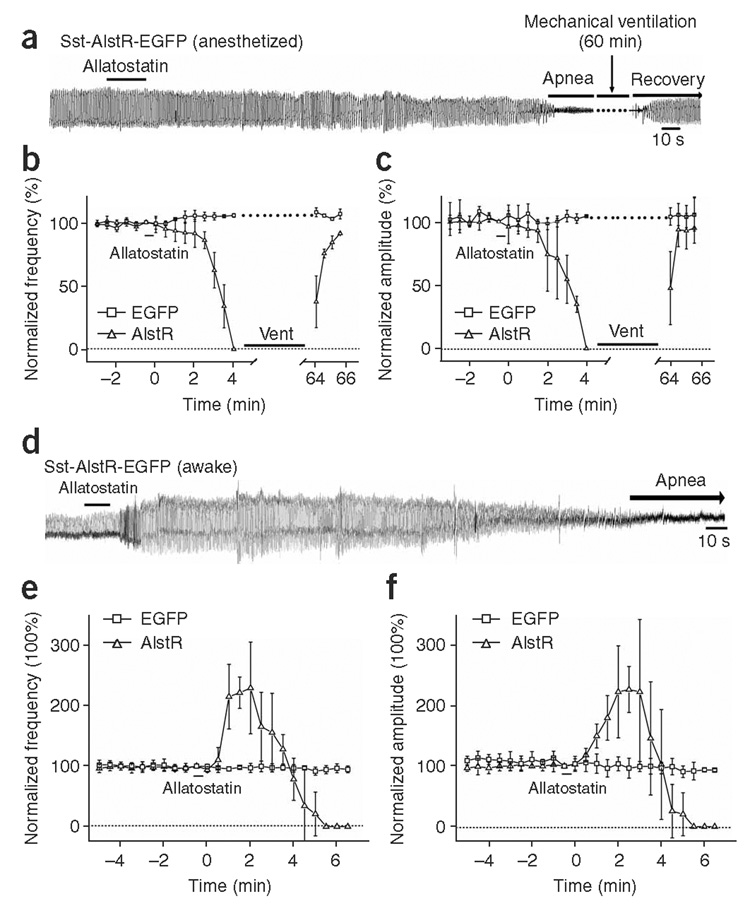Figure 2.
Rapid silencing of AlstR-expressing preBötC Sst neurons induced apnea in anesthetized and awake rats. Allatostatin was administered (0.42 µmol per kg, intracerebellomedullary cisternally) after prior (6–8 week) bilateral preBötC microinjection of Sst-AlstR-EGFP. (a) Changes in the breathing pattern (airflow) of anesthetized rat on allatostatin application; mechanical ventilation was used for the duration of apnea (~60 min). (b,c) Allatostatin administration induced a gradual decline of both the frequency (b) and tidal volume (c) until apnea developed at ~4 min post-allatostatin application. After mechanical ventilation, the rats resumed spontaneous breathing (n = 4). It should be noted that, in n = 2 out of 4 anesthetized Sst-AlstR-EGFP rats, there was a small, but significant, transient increase in ventilation in ~20 s after allatostatin administration (Supplementary Fig. 5) that is not apparent in group data (b and c). (d) Changes in the breathing pattern (tidal volume) of awake rats on allatostatin application. (e,f) Changes in the normalized frequency (e) and amplitude (f) on allatostatin application were plotted. Values are mean ± s.d. (Sst-AlstR-EGFP, n = 6; Sst-EGFP, n = 4). Vent, mechanical ventilation. Error bars represent ± s.d.

